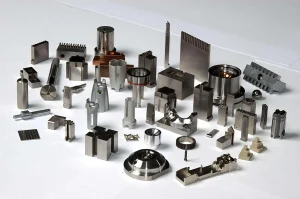Sheet metal is used in a wide range of applications, from toys to aircraft parts. Sheet metal fabrication is the process of manufacturing these parts. Today, Rapidefficient will tell you what sheet metal fabrication is and the process of sheet metal fabrication.

What is Sheet Metal Fabrication?
Sheet metal fabrication is the process of making flat metal sheets into desired parts and products by cutting, folding, bending, and assembling.
There are a wide variety of metal materials suitable for various sheet metal fabrication processes, including steel, aluminum, stainless steel, brass, copper, and zinc. Sheet metal thickness ranges from about 0.006 to 0.25 inches. Thicker gauges are ideal for heavy-duty applications, while thinner gauges have advantages in ductility.
To manufacture sheet metal parts, professional metal manufacturers use a variety of techniques to determine product specifications after a comprehensive design phase. The combination of methods will depend on the unique specifications of the final product. The basic processes are cutting, forming, joining, and finishing.
Sheet metal processing process
Sheet metal processing is a comprehensive cold processing process for thin metal sheets (usually less than 6mm), including shearing, punching, bending, welding, mold forming and surface treatment. Its notable feature is that the thickness of the same part is consistent.
1: Drawing design
The first step is of course to design the drawings. You need drawings of the parts to start the subsequent steps. Usually customers need to provide the drawings themselves. Of course, if the customer does not have the drawings, Rapidefficient can also help customers with drawing design.
2: Draw the expansion diagram
For some complex parts, it is necessary to unfold them into a flat piece, that is, draw the expansion diagram.
3: Cutting
There are many ways to cut materials, which can be divided into non-shear cutting: laser cutting, plasma cutting, water jet cutting, and shear cutting: shearing, punching, punching and sawing.
1): Laser cutting method
Laser cutting is a thermal cutting process that involves using a focused laser beam to melt metal in a local area.
Laser cutting is usually nitrogen or oxygen, which helps protect the processing head from steam and splashes.
2): Plasma Cutting Method
Plasma cutting ensures faster cutting speeds, high precision and repeatability compared to many other cutting processes. It also guarantees automation, ensuring efficient cutting of high-strength metals with low heat input. The disadvantages of this process are relatively high power consumption and the potential for noise with dry cutting.
3): Waterjet Cutting Method
Waterjet cutting is versatile and can cut both hard and soft materials with abrasive and pressurized water. Specifically, pure waterjet cutting is best suited for cutting soft metals such as fabric, rubber or foil. Abrasive waterjet cutting is best suited for hard materials such as carbon steel, stainless steel, aluminum and copper.
4): Shearing Method
Shearing is a metal fabrication process that cuts straight lines through flat metal material by applying a shearing force, causing the material to separate at the point of the cut. It is ideal for high-volume applications and cutting soft materials that do not require a clean finish, such as aluminum, mild steel and brass.
5): Blanking Method
Blanking uses a blanking punch and die to remove a piece of metal sheet from a larger stock material. The die holds the metal sheet in place during the process, while the punch transmits the “blanking force” through the metal. The material removed is the desired component, while the material left on the die is the blank left.
6): Punching method
Punching also uses shear force to create holes in metal sheets. However, in this case, the material removed from the hole is waste, while the material left on the die is the final component. Punching helps create cuts and holes of various sizes and shapes.
7): Sawing method
Sawing works by using a sawtooth tool to gradually cut the metal material, forming a series of small cuts on the metal. Each saw tooth uses friction and shear force to separate small chips from the material body.
Four: Flanging and tapping
Flanging is also called drawing a hole. A slightly larger hole is drawn on a smaller base hole, and tapping is done on the hole. This can increase its strength and avoid slipping.
Five: Punching machine processing
Generally speaking, punching machine processing includes punching and cutting corners, punching and blanking, punching convex hull, punching and tearing, and punching holes.

Six: Bending
Bending is to fold a 2D flat plate into a 3D part. Its processing requires a folding machine and a corresponding bending mold to complete.
Seven: Welding
Welding multiple parts together to achieve the purpose of processing, or welding the edges of a single part to increase strength.
Eight: Surface treatment
Surface treatment generally includes phosphating film, electroplating colorful zinc, chromate, baking paint, oxidation, etc. It depends on the customer’s requirements.
Nine: Assembly
Assemble the processed parts into a finished product, and be careful not to scratch the surface.
The process of sheet metal processing seems complicated, but in the hands of professionals, it will be very smooth. Rapidefficient, as a professional CNC processing company, has very rich experience in sheet metal processing. If you have processing needs, you can contact us directly.






